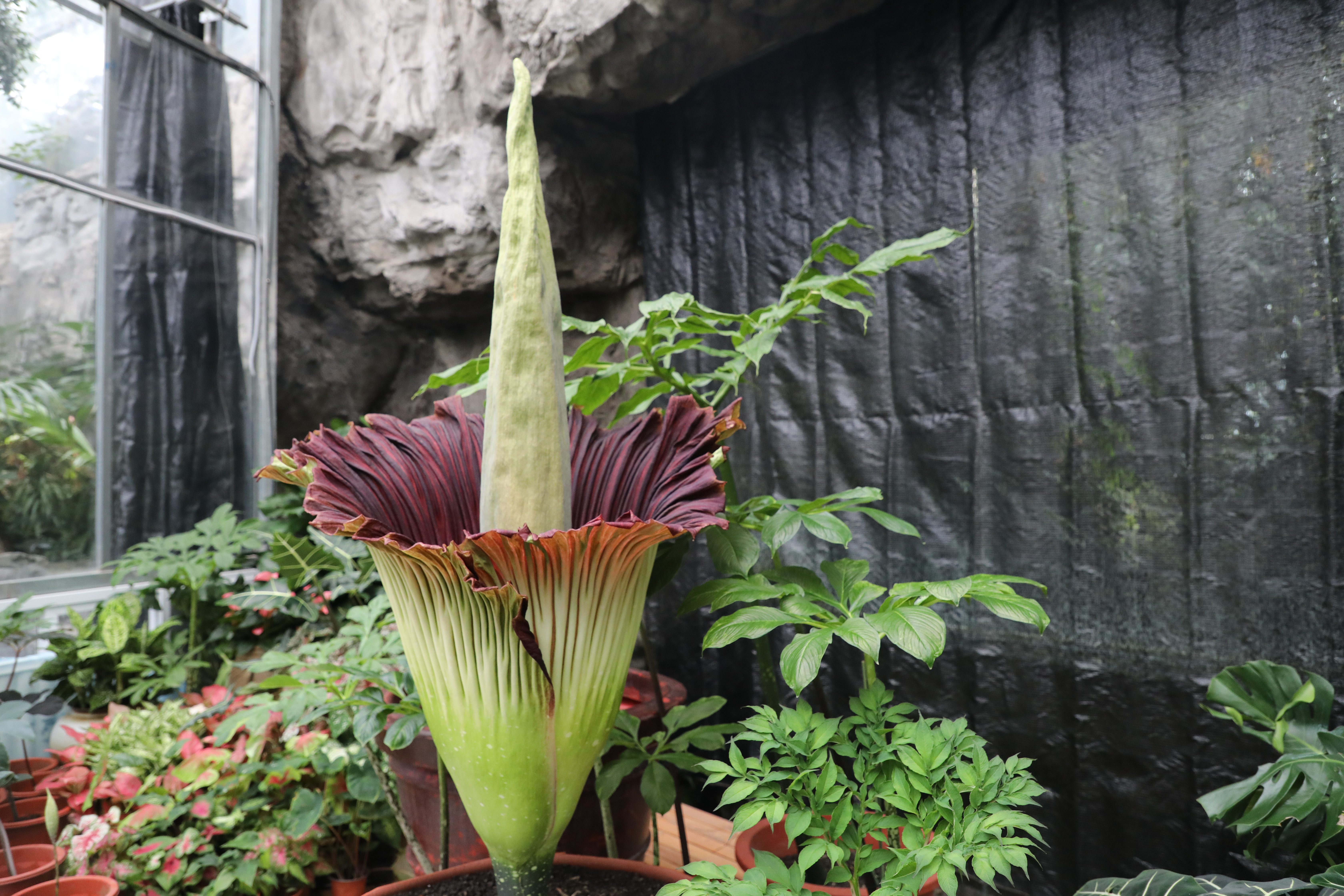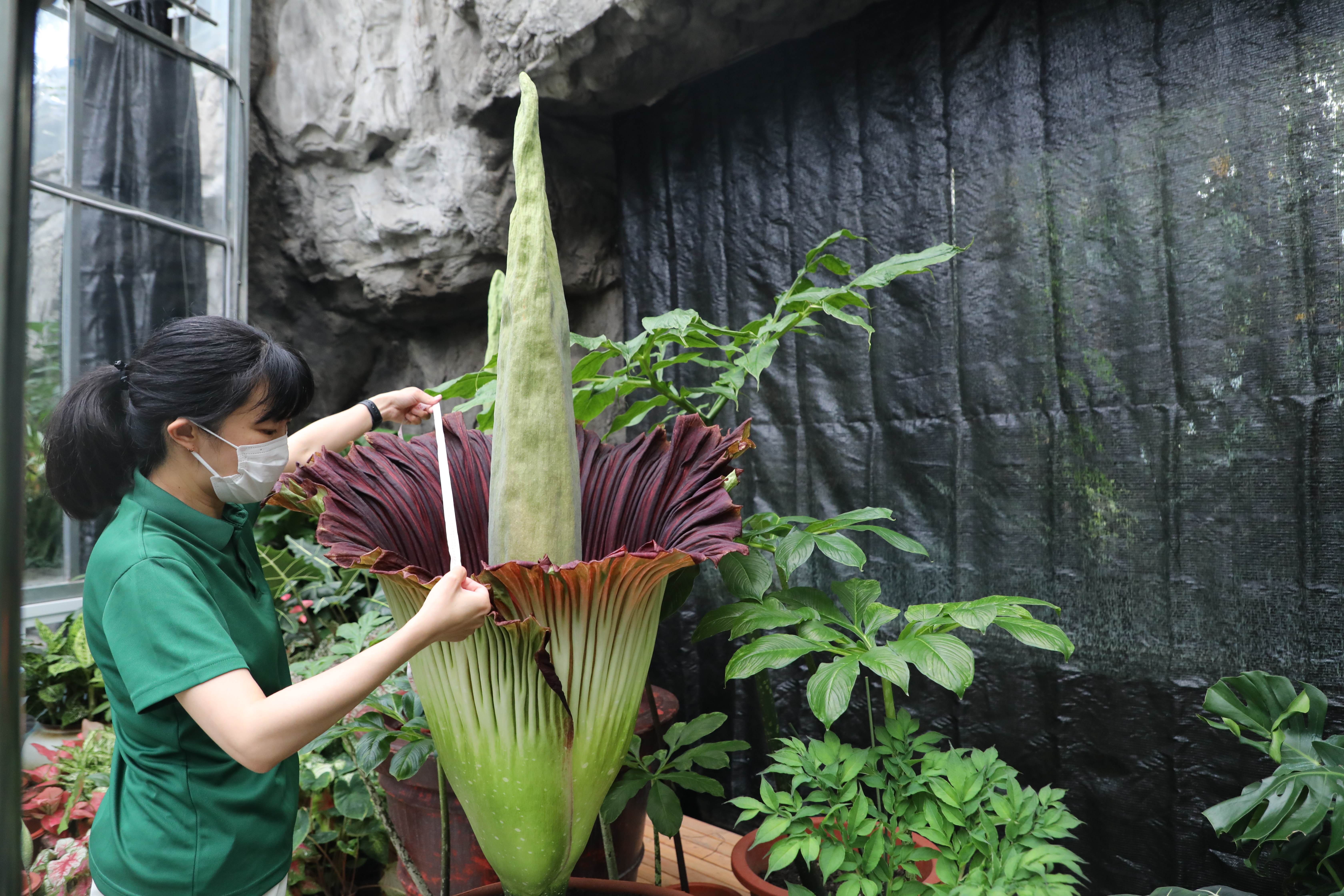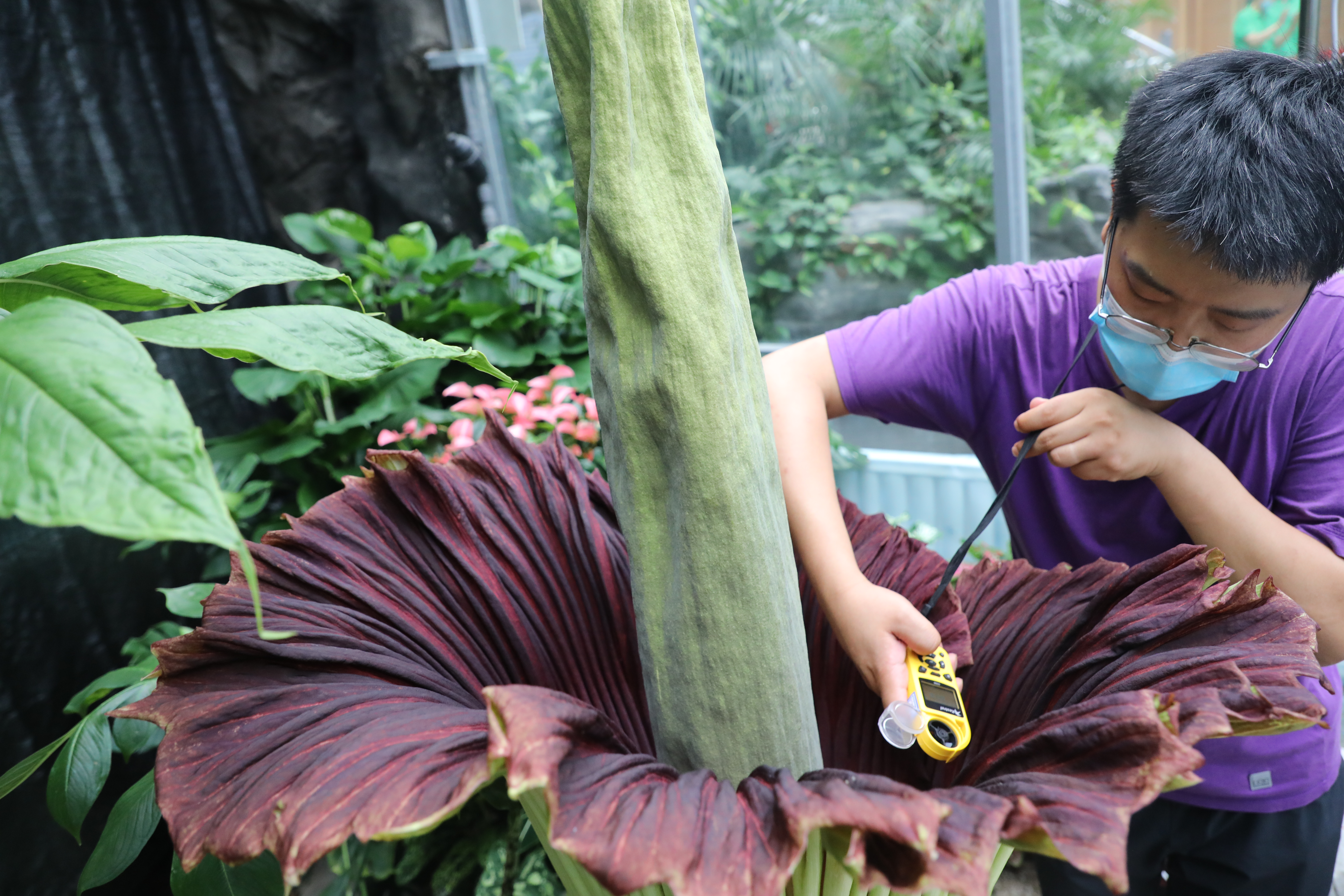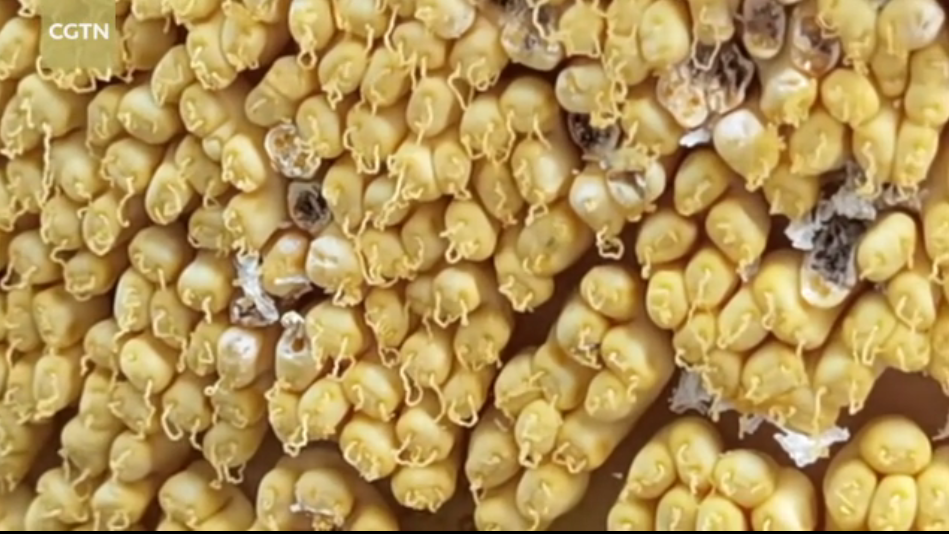01:26

A giant corpse flower blooms next to another big corpse flower in the exhibition greenhouse in Beijing's National Botanical Garden, July 20, 2022. This is the second corpse flower that has bloomed recently at the National Botanical Garden. The first one bloomed on July 6, and the third one will soon bloom. Researchers say this is the first opportunity to observe the simultaneous blooming of corpse flowers in an artificial environment.
The flower, also known as the Titan Arum plant, is rare. It is one of the most smelly flowers in the world. It only blooms three to four times in its life, and each flower lasts less than two days.

A giant corpse flower blooms in the exhibition greenhouse in Beijing's National Botanical Garden. /National Botanical Garden
A giant corpse flower blooms in the exhibition greenhouse in Beijing's National Botanical Garden. /National Botanical Garden
The corpse flower is native to the tropical dense forest of Sumatra Island in western Indonesia. It has the largest unbranched inflorescence in the world. The giant corpse flower on display is 1.68 meters high. Because the corpse flower is huge and consumes lots of nutrients, its flowering period is only about 48 hours. When it blooms, it releases its own gas containing more than 100 chemicals, which gives it a smell of rotting flesh. It also emits heat when it blooms, and the inflorescence stays at around 36 degrees Celsius, close to our body temperature. Changes in smell, color or temperature are all designed to attract insects such as flies and beetles for pollination.

A staff member of the National Botanical Garden measures the blooming corpse flower. /National Botanical Garden
A staff member of the National Botanical Garden measures the blooming corpse flower. /National Botanical Garden

A staff member of the National Botanical Garden measures the temperature of the blooming corpse flower. /National Botanical Garden
A staff member of the National Botanical Garden measures the temperature of the blooming corpse flower. /National Botanical Garden
The flowering of corpse flowers in Beijing's National Botanical Garden allowed researchers to take a closer look at the plant. Researchers have recorded the pollen production of its male flower and have made the video public for the first time.
00:21

The research on the cultivation of the corpse flower is of great significance to the National Botanical Garden. The plant was listed as vulnerable by the International Union for Conservation of Nature (IUCN) in its 1997 Red List of Threatened Species. The condition of the corpse flower in the wild is precarious. Sumatra's rain forests have been decimated due to large demand for palm products and timber. Indonesia has lost around 72 percent of its original tropical rain forest, and the situation is still deteriorating.
It is necessary to study the plant's biological mechanism of reproduction to find a way to save the species. At the same time, the corpse flower also has a high scientific research and economic value. The bulb contains a large amount of glucomannan which can be widely used in food, medicine, cosmetics, chemical and biological fields.
With a total planned area of about 600 hectares, the National Botanical Garden is set to help strengthen the ex-situ conservation of endangered plant species.
The garden plans to collect more than 30,000 kinds of plants, including representative plants of different geographical regions of the world, as well as rare and endangered plants.
(Cover image via a screenshot)
(The video is shot by Zhu Yonggen and edited by Liu Haibo)
(If you want to contribute and have specific expertise, please contact us at nature@cgtn.com.)

